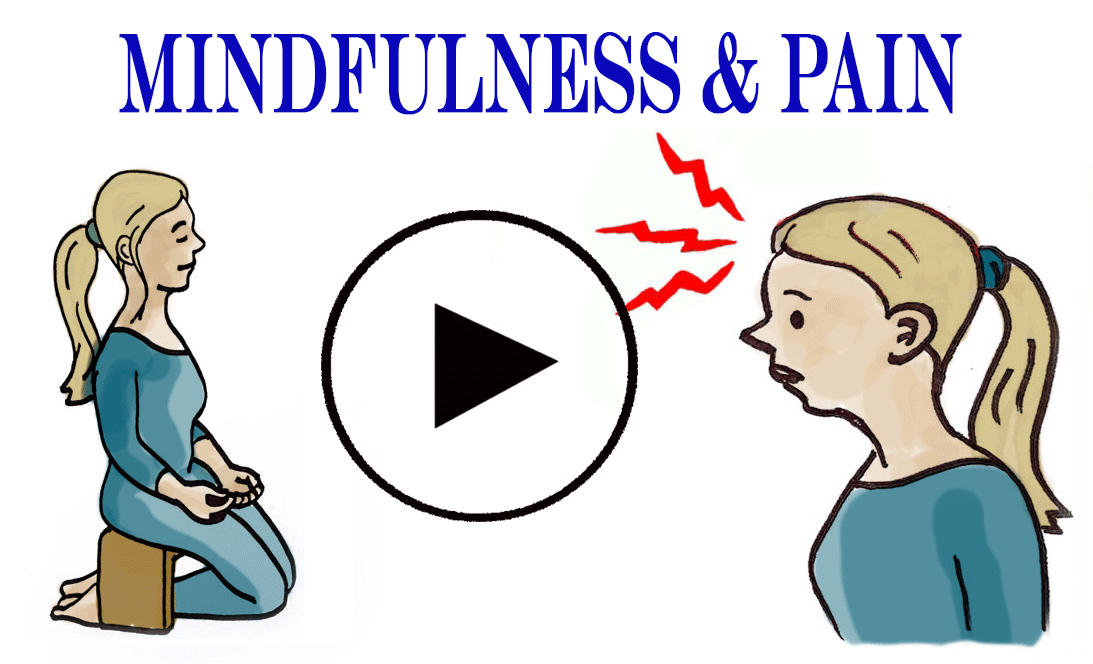MINDFULNESS AND PAIN
ACUTE PAIN
There are two types of pain: acute and chronic.
In acute pain, there is tissue damage, e.g. if you hit your thumb with a hammer.
This pain is a useful signal that you need to rest to recover.
When the damage is healed, the pain disappears.
CHRONIC PAIN

Chronic pain is a long-term pain. The body, emotions, thinking and behavior play a role. There is not really one cause.
The pain is not always a useful signal function that you should take rest.
PHYSICAL CAUSE PAIN

The physical causes of pain can be: wear and tear of joints, acidified muscles or an overstimulated nervous system. Each ache is then inflated into a nasty, nagging pain.|
PAIN AGGRAVATED BY NEGATIVE EMOTIONS
 Chronic pain is often accompanied by negative emotions: stress, anxiety or depression. These emotions aggravate the pain.
Chronic pain is often accompanied by negative emotions: stress, anxiety or depression. These emotions aggravate the pain.
NEGATIVE THOUGHTS AND BEHAVIOR

Pain affects your thinking patterns and behavior.
Negative thoughts – You think more about what went wrong in the past or could go wrong in the future because of the pain. People often tend to catastrophe.
Avoid – you push away thoughts of the pain.
Block – you block, you get started by the pain.
Skills - pain makes you impatient.
Behavior – you may move much less than you actually can. Afraid of damaging your body.
Negative self-image – thoughts like: I'm worthless or I can't do anything at all.
ONLINE MINDFULNESS COURSE

On the online course you learn to reduce your pain step by step. You learn how to relax your body and positively transform your emotions, thinking and behavior.
BODY RELAXES

A number of mindfulness exercises are aimed at relaxing your muscles, making your joints more flexible and calming your nervous system.
In the case of pain exercise, attention is focused directly on the pain. You learn to reduce the pain in different ways.
The pain decreases.
EMOTIONS POSITIVE

The exercises create a pleasant feeling in your body: prickling, tingling in your hands, feet, stomach or in your entire body. These are accompanied by positive emotions, such as peace and confidence.
Your pain decreases even more.
THINKING POSITIVE

The exercises create a pleasant feeling in your body: prickling, tingling in your hands, feet, stomach or in your entire body. These are accompanied by positive emotions, such as peace and confidence.
Your pain decreases even more.
BEHAVIOR POSITIVE

Your thinking patterns and behavior are no longer focused on the pain.
Thoughts in the present - you live more in the present and less what went wrong because of the pain in the past or in the future.
From avoidance to acceptance – you no longer fight the pain.
That makes the experience less intense.
From blocking to letting go – it's better to distance yourself.
From lack of skills to the right skills – e.g. patience.
From negative to positive behavior – you move within the limits you can.
Positive self-image - even though I am in pain, I am a valuable person.

